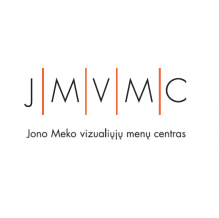The Venice Biennale of Architecture is one of the most prestigious architectural events in the world. This is a wonderful opportunity to see trends and architectural experiments taking place in as many as 55 countries in one place. This year, for the first time, Lithuania will be participating in the 15th Biennale of Architecture at a joint Baltic pavilion with Estonia and Latvia.
The Architecture Foundation will be representing Lithuania at the Baltic Pavilion and will present, among other architectural works, George Maciunas’ Atlas of Russian History from the Fluxus collection managed by the Jonas Mekas Visual Arts Center.
George Maciunas created his most seminal work – three dozen historical diagrams – from 1953 to 1973. For twenty years he was engaged in the graphic illustration of historical, political, cultural, economic and artistic causality, first as a student of various interests, then briefly as an architect and for a long time as a pioneer of Fluxus, and finally as a member of the Fluxhouse Cooperative.
Maciunas drew his Atlas of Russian History album on tracing paper used for copying architectural plans. In order to easily remove a drawing without destroying the album itself, blank sheets were perforated at the binding, but Maciunas made do without them. He simply turned the album sideways and, using a perfected font, by copying the outlines of walls, proceeded to draw three dozen maps. He marked down the most important dates and facts, and continued to write additions in pencil, intending to finalize his project at a later date.
The pages note all of the most important events and changes in the history of Russia. Chronologically, the first map at the end of the album is 700 BC and notes the presence of nomads and steppe people, further maps illustrate Russia’s baptism, the Mongol-Tatar invasion, the Mongol empire. The chronology ends with the top sheet map of the 19th century Russian empire. The transparent paper makes it possible to see the connections between different layers of time and creates the impression of a tightly interwoven historical whole. The partial overlap of the data illustrates the historiographic depths of the past. The sequence of maps shows the causality of space and time.
This is how the concept of the Atlas of Russian History should be understood, even though today it is a folder of individual pages that has lost its original form of a sketch book. The disassembled Atlas is now useful in a different way: the maps can be compared.
The Atlas conveys a vivid picture of Russian history, although Maciunas basically worked with only two templates copied from his cartography work – a small-scale overview and a medium-scale more detailed map. His overview maps illustrate macro trends and key events in the Eastern Hemisphere. The areas between Central Europe and Alaska, between the Arctic and India, as well as the Pacific Ocean are shown in the context of longer periods, one hundred or two hundred years (1500-1700, 1700-1800, 1800-18 […]). For an easier understanding of the maps, Maciunas supplemented them with conventional markings: asterisked geographical expedition routes, explorations on land and water, rectangles marking settlements, cities and fortresses, and dashes indicating occupied areas. Russia’s relatively stable northern border has been the Arctic Ocean for centuries, but its southern borders have always had to be defended.
It is very symbolic that Maciunas’ Atlas of Russia is presented at the Venice Biennale of Architecture, because the series can be read not only as a yearbook of geography or history, but also as a perfect architectural exhibit.
The exhibition at the Giobatta Gianquinto in Venice, next to the Biennale’s main exhibition space, the Arsenal, will run until the end of November.
Venue: Palasport Giobatta Gianquinto (Palasport Arsenale), Calle San Biagio 2132 Castello – Venice



